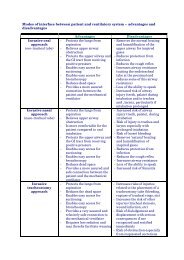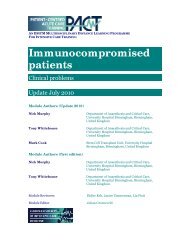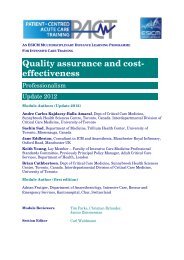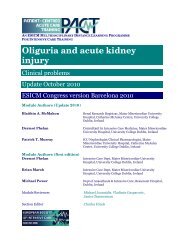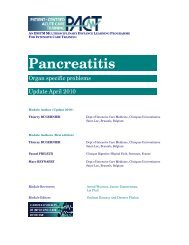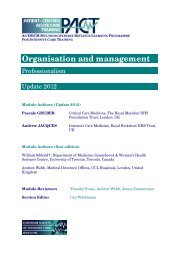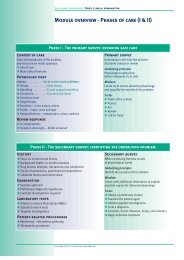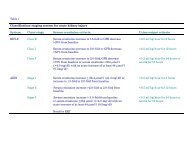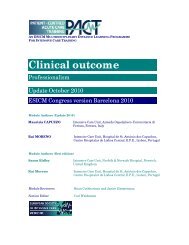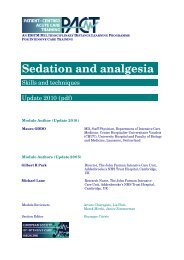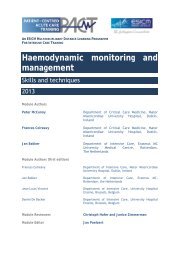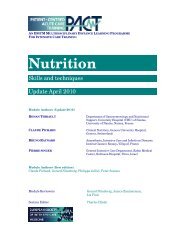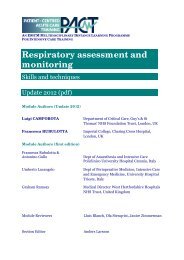Pyrexia - PACT - ESICM
Pyrexia - PACT - ESICM
Pyrexia - PACT - ESICM
Create successful ePaper yourself
Turn your PDF publications into a flip-book with our unique Google optimized e-Paper software.
Task 3. Fever in specific categories of critically ill patient<br />
3/ FEVER IN SPECIFIC CATEGORIES OF CRITICALLY<br />
ILL PATIENT<br />
Some categories of critical care patients deserve special mention. In some<br />
centres, surgical ICU is a separate entity but even where surgical patients are<br />
part of a general critical care population, some distinctive considerations<br />
pertain particularly in the early postoperative period. Fever in the immune<br />
suppressed and in neurological patients is also included here.<br />
The surgical critical care patient – determining the<br />
cause of fever<br />
The normal response to trauma and surgery includes release of proinflammatory<br />
mediators and an elevation of body temperature that usually does<br />
not exceed 38.5 °C and does not last longer than two days, unless the surgery<br />
was done for infection itself, e.g. peritonitis. Hence, any elevation of<br />
temperature above 38.5 °C, lasting longer than two days or developing on the<br />
third day, may indicate concomitant microbial infection and sepsis. About 10%<br />
of trauma patients develop a nosocomial infection.<br />
Trauma has some immunodepressant effect thereby increasing the risk<br />
for infection.<br />
Other risk factors relate to advanced age, underlying morbidity and extent of<br />
trauma and surgery. Risk factors also include prolonged hypotension,<br />
haematoma, foreign bodies and blood transfusion. Repeated and careful<br />
searches for a source and micro-organisms are mandatory in these patients.<br />
Gram-negative pneumonia and wound infection are among the most common<br />
sources. Careful search should be made for an infective focus, including removal<br />
of dressings and wound inspection. Bear in mind, however, that at least 35% of<br />
episodes of fever after trauma or surgery are of non-infective origin, and<br />
thromboembolism may lead the list of causes.<br />
Causes of fever of recent onset and infection in descending order of<br />
likelihood are:<br />
<br />
<br />
<br />
<br />
<br />
<br />
<br />
Nosocomial pneumonia (and rarely empyema)<br />
Urinary tract infection<br />
Wound infection<br />
Catheter-related infection<br />
Sinusitis<br />
Gram-negative bacteraemia<br />
Miscellaneous.<br />
Empirical antibiotics should only be given after appropriate clinical assessment<br />
and provisional diagnosis, imaging and obtaining specimens for culture.<br />
Antibiotic therapy if started should be reviewed, in the clinical context, once<br />
staining and culture results become available.<br />
[30]



